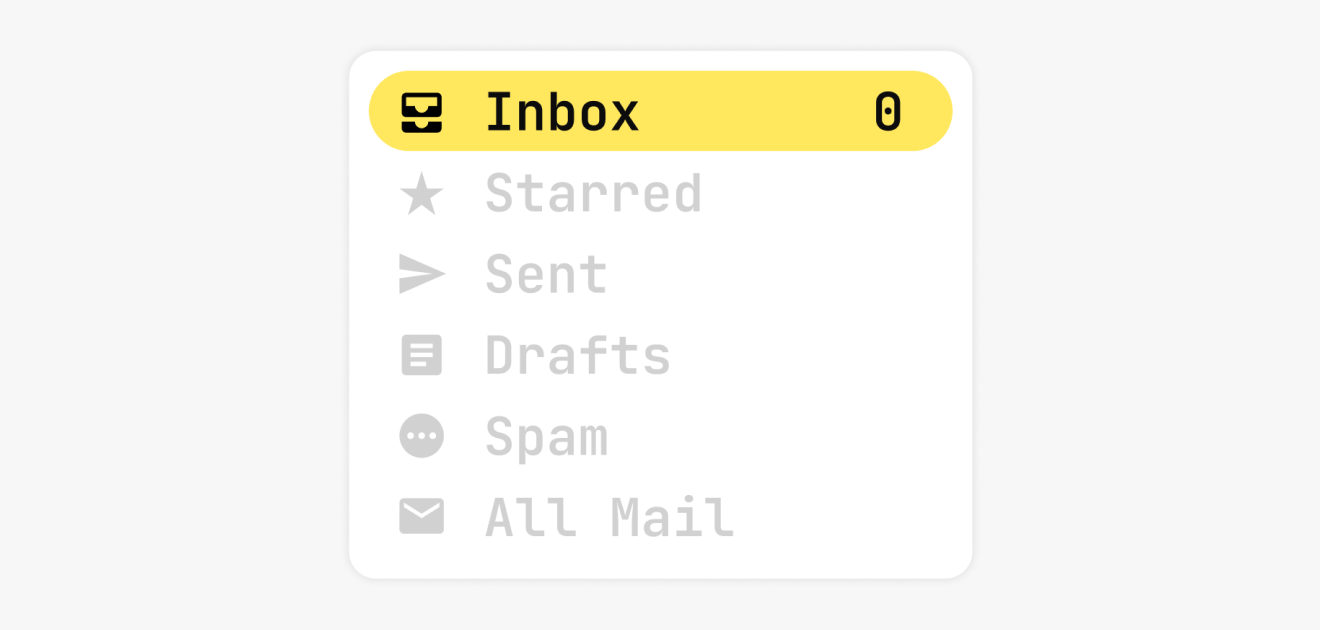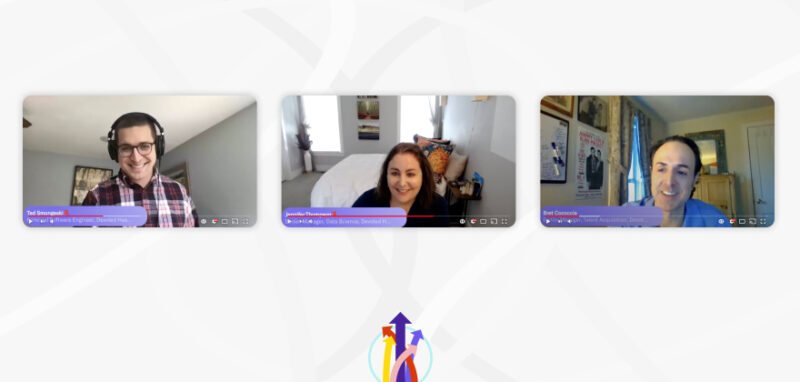
2024 Tech Hiring: 7 Ways to Stay Competitive in Tough Job Markets
It felt like not long ago employers were eager to fill open roles in anticipation of accelerated growth. Now, jobseekers are feeling the pinch of tough job markets between layoffs and a hiring slowdown due to market shifts.
Whether you are unemployed, underemployed, or feeling complacent in a role, it’s easy to feel the effects of tough job markets. That goes for jobseekers on Hired or out in the world when they don’t see an influx of interview requests or responses to applications.
While it is tough out there right now, it’s important to remain proactive and not let the weight of the hiring market bring you down. In this blog, we provide transparency on the state of the market, practical guidance for the job search, and resources to boost your employability during harder times.
It’s not you, it’sSo, why is it so hard to find a job right now? The answer boils down to a number of reasons including economic instability, the Federal Reserve’s policy decisions, cloudy hiring processes, and industry-specific trends.
Tech hiring landscape
Following a tech hiring high in 2022, we are now seeing the dust settle into some lows as tech faces particular hardship when it comes to the labor market. In the first two months weeks of 2024, companies laid off significant amounts of tech workers.
As you probably know, competition is tight for tech candidates. Tech companies are still hiring for positions but at a slower rate than before. In a broader tech hiring view, our own platform data shows that hiring peaked in the first quarter of 2022 and has been declining quarter over quarter ever since.
A recent episode of WIRED’s Gadget Lab podcast shared that the narrative around layoffs stems from tech companies overhiring during the pandemic money was cheap during the pandemic. At this time, money was also cheap so companies could borrow money at low interest rates.
As daunting as the layoffs seem, not every tech discipline is affected equally. According to HackerRank’s 2024 Developer Skills Report, 52% of developers are concerned about layoffs. However, only 6% of those surveyed say they’ve been laid off in the past two years. Developers tend to be less vulnerable to layoffs compared to other tech roles but understandably still feel anxious.
As for tech skills, the Gadget Lab podcast also revealed that actively hiring employers have stricter requirements for candidates these days. Host Lauren Goode, explained, “What I did learn from talking to one source is that the bar for a technical interview has gotten measurably higher. Over the past two years, Interviewing.io believes interviewing for a technical job has gotten 22% more difficult.
It has gotten that much more difficult to just receive a thumbs up on the technical portion of the interview because the mock interviewers are reflecting on what is going on in the market. They’re using a similar testing style or set of questions that, say, someone at Google or Meta would be using, and it’s just gotten that much harder.”
Quit rates
In this market, more workers are also staying put – thanks to factors including those mass layoffs, interest rate increases, and inflation.
Between 2022 and 2023 the quit rate fell 12%. The decreased quit rates indicate low confidence in the market.
Unstable hiring processes
The abundance of jobseekers applying to positions adds pressure and time to many hiring processes. There is also a lot of shakiness at the moment for numerous HR and recruiting teams. Economic uncertainty has a ripple effect on budgeting and of course, hiring. Event talent pros themselves have been among the most impacted by layoffs.
Many companies also have more team members incorporated into the hiring process (to boost equity and collaboration) but more people typically means a longer interview cycle. In fact, the average time to hire a new time member hit 44 days last year, setting a record high.
Further, as employers seek candidates in a highly competitive job market, we see a growing phenomenon of lengthy interviews.
Steven Leitch, a career coach and resume expert says, “With the rise of remote work and a larger pool of talent accessible to companies, they are increasingly cautious and seeking more ways to assess candidates thoroughly.”
Remote work tension
Tension between employers and employees over remote work continues. Just when we thought the work-from-home lifestyle might be here to stay, companies increasingly called employees back into the office. Regardless of their current working environment, Hired data shows tech workers value work-life balance while remaining ambitious.
According to Hired tech recruiting marketplace data, employers have steadily decreased the roles open to remote work. After a high of 72% of open roles classified as “open to remote,” in Q2 of 2022, a year later it was only 59%, then only 46% at year-end. As we enter 2024, the percentage continues to drop.
Meanwhile, much of the tech worker preference still sits with a truly remote work environment or a very flexible hybrid model according to Samantha Friedman, Hired SVP People Strategy. She believes this has led employees to seek opportunities aligned with their true preferences.
What the experts are saying about tough job markets
During Hired’s Breaking Through Bias virtual event, career experts candidly weighed in on the leverage jobseekers have in the current job market. Read their firsthand insights below for a better grasp of the big picture and advice to empower your search.
Nina Roussille, Assistant Professor, MIT
“Specifically, in the tech sector (defined narrowly as the Silicon Valley tech roles), it’s been more dire than it used to be… Try to redefine for yourself what a tech role is. There are now opportunities in tech occupations in companies that are not defined as tech firms. Every firm out there, even in the older industries, needs tech workers. Those industries have been way less affected recently than Silicon Valley firms. Broaden your perspective. Think a little bit more creatively about what a tech role should be.
The other one is remote work, which makes it so you don’t need to find a job exactly where you’re located. A lot of these dinosaur industries are more open to remote and flexible workers. My optimistic take is it will require more creativity and a broader search but there are still opportunities out there.”
Maria Petnga-Wallace, Diversity, Equity, & Inclusion Consultant, Colorintech
“There’s still a need for particular skills, especially in AI and machine learning. Within the company I work with in cyber, there’s still a real drive to have, for example, female and underrepresented group representation. I encourage everyone to network. Identify the organizations you wish to work with in the near future and engage with people in those tech firms.”
Mercedez Bluebyrd, Program Manager of RISE, Gusto
“You have leverage in really understanding who you are and what you bring to the table. If you’re a talented person who really understands what you can do for a company, there’s a value add there and that leverage is limitless.”
In another Hired webinar, Bold Predictions & Benchmarks, panelist Brad Schneider added his optimistic take on 2024 tech hiring.
Brad Schneider, VP of Strategic Consulting, Criteria
“I think tech hiring will pick up. I view it like a pendulum. When the Fed rate was low and money was cheap, there was a mentality of growth at any cost. There was an enormous amount of hiring, especially in tech. As interest rates increased, it became more and more expensive to borrow. Some organizations couldn’t get loans. There was a need to become profitable and to do so quickly was through layoffs. So you had a tremendous number of layoffs in the tech space.
People say the one constant is change. A lot of that change is driven by advances in technology. You need people to build that technology and you need people to service it. Salespeople, customer service reps, engineers, and so on. Artificial intelligence is getting really exciting and hot now. Tech companies once again will lead the way in cutting-edge technology. That will lead to more recruiting. I think there will be a turnaround in the second half of this year.”
New opportunities in new industries
Echoing Nina Roussille’s point above on broadening your perspective, there are currently established employers – not typically associated with tech – making a push to hire tech jobseekers. From hotel chains to retailers, investment firms, and the federal government, you might be surprised to find opportunities in other industries you previously hadn’t considered. A company doesn’t have to be in the tech industry to be a top tech employer.
1. Upskilling is keyIdentify high-demand skills and industry trends, and learn to align your application (or Hired profile) accordingly. Investing time in learning new programming languages, refining project management abilities, or earning relevant certifications will not only broaden your skill set but increase your marketability and adaptability amidst the competition.
Leverage online learning platforms, attend industry events virtually or in person, and engage in hands-on projects. Learning is the cornerstone of employability and a powerful tool to stand out.
Get more details on why and how to upskill in this blog and check out these Hired partners helping tech jobseekers acquire in-demand skills.
2. Refine your personal brandWhat should people think about when they hear your name? What populates when hiring managers or recruiters search for you online? Your personal brand is a reflection of your skills, experiences, and values.
In an employer-driven market, it’s more important than ever to articulate your unique value proposition. By developing a distinct and authentic brand, you effectively differentiate yourself from other candidates and leave a lasting impression on potential employers. So, how should you go about it?
Start by identifying your unique strengths, skills, and values, then tailor your resume, cover letter, and online presence to reflect these qualities. Showcase your expertise through thoughtfully crafted content on professional platforms, engage in relevant industry discussions, and seek out networking opportunities to build a strong professional community. A cohesive personal brand not only boosts your visibility to recruiters but also demonstrates your commitment to personal and professional growth.
Watch this panel discussion for expert advice on how to develop and build confidence in your personal brand.
3. Leverage the power of networkingYour network is your – you know the rest. And with thoughtful networking, it is true! It’s not just about making connections. It’s about building meaningful relationships that can open doors.
Outreach may sound pretty terrifying for some but getting out of your comfort zone might bring more opportunities than you realize. Start with second-degree connections such as friends of friends, acquaintances, and old colleagues.
Before reaching out, determine the value you offer as a professional, your main skills, and your objective. Keep a consistent narrative across platforms (showcase that personal brand!). And remember, you’ll get in return what you give, whether it’s value, concern, or empathy. Entering networking relationships with a ‘giving’ mindset is key.
Use this resource as a more comprehensive guide for networking with intention and confidence.
4. Make every interview countYou may have to work harder with what you have on hand. This means preparing more and practicing your code or other technical skills to ensure you ace assessments and interview questions.
You may also consider having fewer interviews as less cumbersome to manage than if you were white-boarding thrice a week and not performing your best each time. You run the risk of interview burnout when multiple opportunities are spreading you thin. Consider the silver lining and make every interview count with the added focus you can give to each one at present.
With technical assessments growing in complexity, take advantage of our interview prep partners for some extra guidance. Also, consider using AI to make prep easier and more in-depth
Bonus tip: Make your applications count too. Get very targeted with your application approach. Research to understand what companies or roles you’d be a top applicant in. Spend more effort applying to a smaller number of highly relevant jobs, rather than casting a wide net of largely similar applications.
5. Follow up with companiesThe nature of recruitment can be fairly volatile right now, with a host of factors causing delays in companies getting back to you. You may have to adopt a more proactive approach than normal and be the one to steer hiring conversations forward.
Add your updated availability to each follow-up note and balance your tone to be cooperative versus demanding. For example, “I enjoyed chatting with you last week! I wanted to share a few times I am free to continue our conversation in case you are as keen to assess a mutual fit…” Overall, be genuine, pragmatic, and most importantly, empathetic in your follow-up.
You might add a note to your calendar to check in every 10 or so days. If a company happens to share a timeline for its next update, stick to that. Be courteous in referencing previous highlights from your conversation and check in to see if scheduling the next steps is feasible. Do not use these notes to sell yourself. Save the humble brag for the next round of interviewing if and when you land it.
Instead, focus your notes on relationship building. Connect your reader to what they care about. Perhaps, add a link to an article on a topic of interest to them. Think back to previous chats and recall what they might have shared with you.
6. Practice patienceFinally, remember that every job search, especially in a tough market, is a marathon – not a sprint. It’s natural to experience periods of slower progress.
And keep in mind: even the most qualified candidates may have to wait a bit longer to land their perfect role in these market conditions.
Remember, hiring teams are often spread thin. The layoffs in the last twelve months included a lot of recruiters too. They’re also sharing that they’re getting a ton of applications right now – many of which are from unqualified applicants. Even with tech tools, like applicant tracking systems, it’s a lot to work for lean teams.
So, make it easy for them to see what a great match you are and how you’ll bring what they need to be successful.
If you’re a tech (or sales) candidate on the Hired Marketplace, use the guidance from the Candidate Experience team. It could help you get better matches and more interviews.
7. Adjust salary expectationsBeyond the general job function, do your research to understand how your particular niche and location might impact your earning potential. Software engineers, for example, can earn wildly different salaries depending on their specialty – and this can differ significantly by city.
In addition, you may need to calibrate your expectations based on the company in question. Startups may offer a lower salary with higher equity, and the company’s funding status might also have an impact. A startup looking to raise funding, for example, might be willing to negotiate a post-funding round raise.
Related: Try Hired’s salary calculator
While you want to ensure the salary you deserve, it’s important to align your expectations with the state of the market too. This is where doing that research and being realistic about the state of the economy comes into play.
If you do lower your salary expectations, there are still plenty of benefits to negotiate as part of your total compensation. See our Salary Negotiation Guide, created in partnership with Educative.
Continue your search in tough job markets with confidenceIt’s clear the factors we shared here will play crucial roles in continuing to shape the labor market’s direction. While the job market has undoubtedly become more challenging, with the right strategies and resources, you will successfully navigate this change.
And speaking of resources, here are some of our popular ones to give you more direction in your search:
- How to Build Leverage in a Volatile Job Market (VIDEO)
- Code Your Career: Staying Competitive in the Developer Job Market (VIDEO)
- 6 Common FAQs from Jobseekers: Answers to Help You Prepare for & Dive Into the Job Search
Originally published July 2023. Updated March 2024.
Related blog posts

Is It Time to Quit Your Job? How to Leave Without Burning Bridges
5 steps to a graceful exit and avoid drama when leaving a job It’s important not to burn...

Why You Should Consider a Lateral Move for Career Growth
If you’re focused on advancing up the career growth ladder, a lateral move to another...

Which 7 Critical Factors Contribute to Your Compensation Offer?
Perhaps you’re waiting to receive a job offer and salary package. Or maybe you already have and...

Empower Your Career: Understanding Salary Inequality in Tech (2023 Research)
A guide to Hired’s 2023 Wage Inequality Report for tech workers and jobseekers! Download the...

Tech at Devoted Health: The Power of Collaborative Problem-Solving (VIDEO)
Devoted Health is on a mission to change the face of US healthcare for seniors. Watch this...

9 Smart Tips for Jobseekers to Identify & Avoid Job Scams in 2023
With layoffs on the rise, job scammers are keen on taking advantage of a crowded market. As a...
